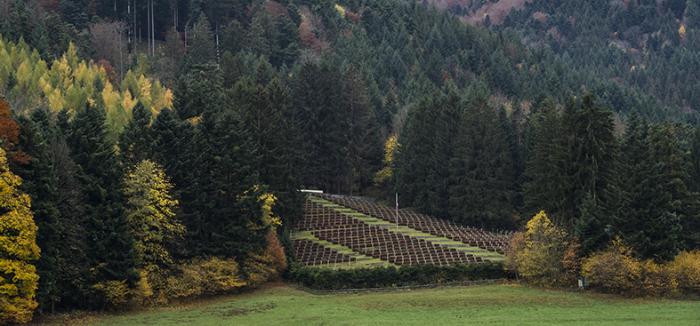
La nécropole nationale du "Chêne Millet" à Metzeral. © ECPAD
Pour accéder au panneau d'information de la nécropole, cliquer ici 
Located in the place known as Le Chêne Millet, the Metzeral National Cemetery holds the remains of soldiers who died for France during the battles that took place in the Vosges during the First World War. The site is named after the painter Jean-François Millet (1814-1875) who, in 1868, visited the industrialist and Mayor of Munster, Frédéric Hartmann.
In remembrance of the soldiers who fought in 1915 in the battles for Metzeral, Rechakerkopf, the Sillacker, the Braunkopf and the Linge, 2,630 French soldiers are buried in this cemetery, of whom 855 lie in an ossuary. Established in 1920, the cemetery was developed up until 1924 to accommodate the remains exhumed from over sixty cemeteries in neighbouring towns.
In the centre of the cemetery there stands an ossuary monument dedicated to the Chasseurs Alpins (Alpine Hunters) of the 66th French Infantry Division, who distinguished themselves in the battles for the Linge and Metzeral in 1915. The Chasseurs battalions lost up to 80% of their men, paying a heavy price in these "battles for observation posts", fought to win strategic objectives and so be in a position to observe movements across the Rhine valley. The mountain range has since become known as "Le tombeau des Chasseurs" (the graveyard of the Alpine Hunters). Many of them are buried in this cemetery.
Not far from here, the summit of the Linge, together with its fortified engineering works, have been listed as historic monuments since 1982.